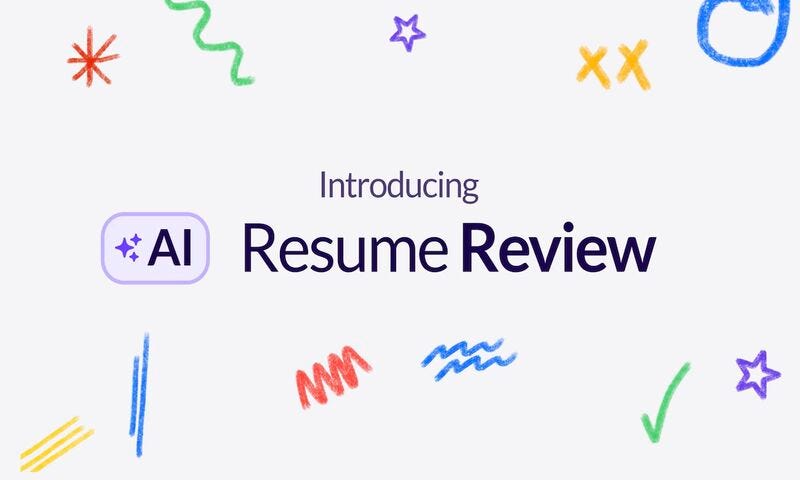Job boards won’t tell you this, but ATS, recruiters, and hiring managers will
Insider knowledge from an ATS to LinkedIn profile tweaks and a mindset shift that could change everything.
This week is all about surfacing smarter.
Job boards are noisy. Applications are piling up. However, the best candidates aren’t just applying, they’re positioning themselves.
Whether it’s how your resume lands in the ATS, how your LinkedIn profile appears in recruiter searches, or how you frame your job search on your feed, visibility comes from understanding what employers are actually looking for.
This edition includes:
Insider advice from someone who worked inside the ATS systems
8 LinkedIn tweaks that make recruiters actually see you
A mindset shift that helps you pitch yourself as a problem solver
A new AI tool that helps tailor your resume to real job descriptions
Let’s ensure the right people find you more quickly.
What I learned working inside two ATS companies
Author: Bogdan Zlatkov
🔗 Read the full post
Bogdan used to think the ATS was blocking his job applications, until he worked inside two of the biggest ones (LinkedIn & Rippling). What he learned changes how you should approach your resume:
1️⃣ ATS = Google for recruiters
Recruiters type keyword searches (e.g. “Project Manager” + “Agile”)
↳ If your resume doesn’t include those words, you won’t appear
↳ The Skills section is the best place to list 15–30 keywords (skip soft skills)
2️⃣ Resume formats matter less than you think
Modern ATS tools can handle two-column formats and basic designs
↳ If you’ve got 10+ years of experience, try a “combinational” resume format for clarity
3️⃣ Knockout questions are the real filter
Auto-rejections often happen before a human sees your resume
↳ Standard filters: years of experience, missing keywords, incorrect formatting
↳ Sometimes, the rejection is just because you applied too late
Bottom line?
The ATS isn’t out to get you. Forget what you read about beating the ATS. An ATS is predominantly a system of record which Recruiters use to review your CVs/Resumes.
📌 Focus on adding relevant skills to your experience. Apply early. Don’t fear the system, learn how it works.
8 LinkedIn visibility fixes recruiters actually notice
Author: Adam Broda
🔗 View the full post
Feel like you’re invisible on LinkedIn?
Adam shares 8 ways to make sure you show up in recruiter and hiring manager searches, using how LinkedIn Recruiter works:
Here’s what to fix:
Headline: Match your headline to the exact job title you’re targeting (no vague taglines).
Open to Work settings: Add your target title and location, even for remote roles.
Keywords in About + Experience: Recruiters use Boolean search, so use exact phrases.
Location: No location = excluded from location-filtered searches. Add a metro area.
“I’m interested” button: Quietly signal interest on company LinkedIn pages.
Skills section: Fill it out with 10–15 role-matching keywords.
Stay active: Update your profile every 3–4 weeks and engage with 10–15 posts per day.
Add contact info: Make your email visible for easy contact (InMail credits are limited).
Pro tip: Review your public visibility settings; many people accidentally hide sections recruiters need.
📌 Fix these, and you’ll stop being invisible—and start showing up in all the right searches.
The mindset shift that changed my job search
Author: Ben Phillips
🔗 Read the full post
In response to the wave of layoff posts, Ben revisits a decisive shift that helped him stand out in past job searches:
“You're not looking for a job. You're looking for problems to solve.”
He explains that many candidates lead with what they want—“I’m looking for a job,” “I’m looking for X”—but this doesn’t speak to the needs of the employer.
Instead, he reframes the job hunt as:
A business transaction, not an emotional plea
A search for problems you’re uniquely positioned to fix
A mindset that puts the buyer’s (company’s) needs first, not your own
If you’re trained in Design Thinking, this is a helpful analogy:
Treat the hiring manager as the user, and obsess over their pain points.
How to apply this:
Reword your “open to work” updates to show how you solve problems
Speak to outcomes, not just availability
Tailor your LinkedIn headline and summary to focus on value, not need
📌 Companies don’t want to hire people. They need to solve problems. Position yourself as the solution.
New AI tool: smarter resume reviews in seconds
Author: Sam Wright
🔗 View LinkedIn post
🔗 Try the tool on Product Hunt
After over 100+ coaching chats with job seekers, Sam Wright noticed the same problem:
Resumes often don’t align with job descriptions, and most people don’t know how to address this discrepancy quickly.
So, he built something to help: Huntr AI – an AI-powered resume review and tailoring tool.
What it does:
Analyses your resume against a job description
Flag gaps, keywords, and alignment issues
Suggests how to rewrite bullets to improve fit
Speeds up tailoring without losing your voice
Why it matters:
Job boards are noisy; tailored applications get noticed
Most people guess what to edit—this removes the guesswork
You can adapt your CV in under 5 minutes, powered by AI
📌 I’m not recommending or endorsing this, but if you’re interested in AI tools to enhance your job search, check it out.
Thank you for being part of the Get Hired Toolkit community!
I'm delighted to embark on this journey with you and support you every step of the way.
Please share with others and spread the message.
If you have any questions, feedback, or topics you'd like covered, please reply to this email. I’d love to hear from you.
Stay motivated and continually upskill yourself to secure the next job.
Warm regards,
Darren Bush
Founder of Get Hired Toolkit
gethiredtoolkit.com | LinkedIn




